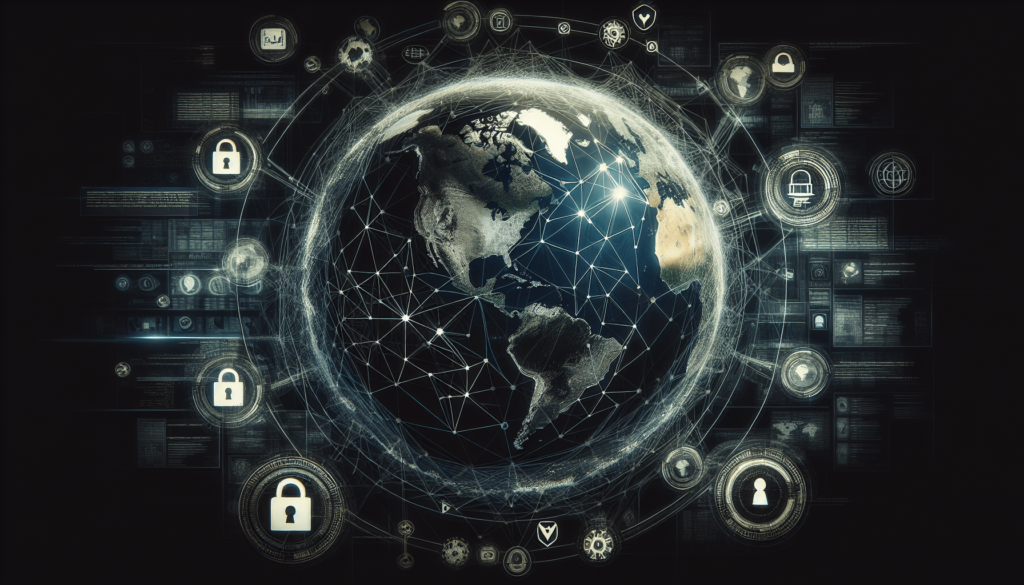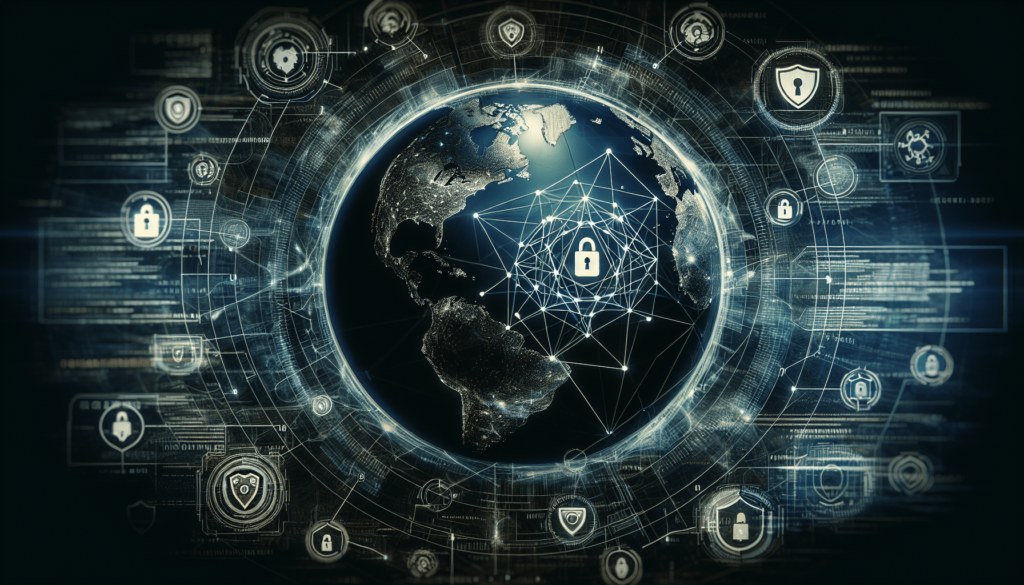Have you noticed the rise in disruptive events making headlines around the world lately? From political conflicts to economic uncertainties, it feels like our world is constantly teetering on the edge. But did you know that these geopolitical tensions are also driving a dramatic increase in Distributed Denial of Service (DDoS) attacks? It’s a dimension of conflict that’s often hidden from the public eye but has enormous implications.

What Is a DDoS Attack?
Before diving into the current surge in DDoS activity, let’s quickly go over what a Distributed Denial of Service (DDoS) attack entails. Simply put, a DDoS attack is an attempt to make an online service unavailable by overwhelming it with a flood of internet traffic. Attackers use multiple compromised computer systems as sources of traffic.
Imagine trying to open a door when thousands of people are pushing against it from the other side. That’s what a DDoS attack does to a website or an online service—it becomes nearly impossible to gain access because the server is overwhelmed with requests.
Record-Breaking Numbers
According to new findings from Radware, web DDoS attacks skyrocketed by an astonishing 265% in the first half of 2024 compared to the latter half of 2023. Furthermore, application-layer DNS DDoS activity tripled in the same period, and there was a 16% rise in locked network-layer DDoS attacks. That’s a lot of technical jargon, but the key takeaway is these attacks are growing in both frequency and sophistication.
So what’s fueling this explosion in digital warfare? Radware researchers pinpoint growing worldwide geopolitical tensions as a significant driver. Hacktivist groups, often motivated by political agendas, claimed responsibility for between 1000 to 1200 DDoS attacks per month in the first half of 2024. That’s almost 40 attacks every single day!
Countries in the Crosshairs
Ukraine: The Unwilling Epicenter
Ukraine has been the most targeted country in the first half of 2024. The domains rada.gov.ua and tax.gov.ua have been under relentless attack since January 2023. One particularly notorious pro-Russia group, NoName057(16), is frequently implicated. This group often collaborates with others like the Cyber Army of Russia Reborn to target Ukrainian infrastructure.
The United States and Beyond
The United States also found itself in the digital crosshairs, largely used as a proving ground by DDoS-as-a-service providers. These cybershops demonstrate their capabilities to potential customers by targeting high-profile US domains. Groups like Channel DDoS v2, ZeusAPI Services, and Krypton Networks took credit for a slew of attacks on American soil.
Targeting Israel, India, and Moldova
Israel has seen attacks from several hacktivist collectives, including the likes of RipperSec, LulzSec Indonesia, and StarsX Team. In the same vein, India and Pakistan continue to jostle with each other in the cyber arena, with each side unleashing waves of DDoS attacks.
The Catalysts: Conflicts and Events
Global Geopolitical Tensions
Pascal Geenens, Radware’s Director of Threat Intelligence, elaborates, “World-wide geopolitical tensions, including conflicts in Europe and the Middle East, as well as international events, like country elections, Eurovision, UEFA Euro, and the Olympics, continue to drive malicious activity.”
Moreover, the upcoming US elections and financial market uncertainties are expected to further escalate cyber disruptions. This confluence of global political and social instability creates a perfect storm for cyber-attacks.
Growing Intensity and Duration of Attacks
In H1 2024, Web DDoS attacks not only increased in frequency but also grew in intensity. Nearly 3% of these attacks exceeded one million requests per second (RPS). Radware highlighted a six-day attack campaign targeting a UAE financial institution that sustained an average of 4.5 million RPS, peaking at 14.7 million RPS. That’s a mind-boggling number! The attackers called it quits after 100 hours of orchestrating these attacks.
The Role of AI
Advancements in AI technology have democratized the tools needed for these attacks. As AI becomes more powerful and publicly available, more threat actors can deploy sophisticated DDoS strategies that were once out of reach for the average hacker.

Web Application and API Attacks
Alongside DDoS attacks, web application and API attacks have also seen a significant surge. Radware noted a 22% rise in such attacks in H1 2024 compared to the previous six months. Here’s a snapshot of the most common techniques:
| Type of Attack | Frequency (%) |
|---|---|
| Vulnerability Exploitation | 32.9 |
| Access Violation | 9.98 |
| Data Leakage | 4.83 |
| SQL Injection | 2.3 |
A substantial portion of these attacks (66%) were directed at applications and APIs in North America, with the EMEA region (Europe, the Middle East, and Africa) witnessing 23% of the activity.
The Bad Bots Brigade
Bad bot transactions—automated interactions that perform nefarious activities—increased by 61% in H1 2024. Half of these activities occurred in North America, underlining the region’s appeal to cybercriminals.

Historical Context and Evolving Trends
Ukraine: A Long-Standing Target
Ukraine has been in the crosshairs of cybercriminals for years, initially catalyzed by geopolitical tensions with Russia. Ever since the annexation of Crimea in 2014, Ukraine has faced numerous cyber-attacks, with DDoS being a favored method. The attacks on rada.gov.ua and tax.gov.ua aren’t isolated incidents but rather part of a prolonged campaign to disrupt Ukrainian governance and economic stability.
Hacktivist Groups: A Complex Network
Hacktivist groups like NoName057(16) often collaborate with other outfits, creating a complex network of cybercriminals united by common goals. For instance, during the 2022 Russian invasion of Ukraine, various hacktivist groups coordinated efforts to attack Ukrainian digital infrastructure. This isn’t a new phenomenon, but the scale and sophistication have increased drastically.
Previous Incidents in the US
The United States isn’t a stranger to DDoS attacks either. From financial institutions to government websites, numerous high-profile targets have been hit in the past. What’s new, however, is the increase in attacks driven by geopolitical motives. DDoS-as-a-service providers see US domains as valuable for showcasing their capabilities, potentially luring new clients.
Why Should You Care?
It’s easy to think of DDoS attacks as problems for large corporations or governments, but they have far-reaching impacts. For instance, when essential services like banks or healthcare systems are targeted, the resultant downtime can affect millions of people. Moreover, as these attacks become more common and sophisticated, there’s an increased risk that smaller organizations or even individuals could be targeted.

What Can You Do?
For Businesses:
- Invest in Security Solutions: Leveraging DDoS mitigation services can help absorb and neutralize attack traffic before it reaches your servers.
- Perform Regular Audits: Make sure to frequently audit your security infrastructure to patch vulnerabilities.
- Employee Training: Your workforce should be aware of cybersecurity best practices to act as an additional line of defense.
For Individuals:
- Stay Informed: Knowledge is power. Understanding the types of DDoS attacks and common phishing tactics can help you recognize and avoid potential threats.
- Use Strong Passwords: Ensure that your online accounts are protected with robust, unique passwords.
- Two-Factor Authentication (2FA): Adding an extra layer of security can significantly reduce your risk.
The Future Outlook
What lies ahead? If current trends are any indication, DDoS attacks will continue to grow in complexity and frequency. As Pascal Geenens pointed out, the combination of geopolitical tensions and the democratization of AI tools creates a precarious future landscape.
Predicted Trends:
- Increased Use of AI and Machine Learning: Threat actors will continue to deploy more advanced AI models to automate and amplify their attacks.
- Greater Target Diversity: Beyond government and financial institutions, sectors like healthcare, education, and manufacturing may find themselves increasingly under siege.
- Regulatory Measures: Expect more stringent cybersecurity laws and policies aimed at mitigating these threats, especially in highly targeted regions.
- Collaboration: Businesses, governments, and cybersecurity firms will need to collaborate more closely to counter these threats effectively.

Final Thoughts
Navigating the rapidly evolving landscape of DDoS attacks driven by geopolitical tensions requires a multi-faceted approach. Staying informed, investing in robust security measures, and fostering global cooperation are key to mitigating these ever-growing threats. While it’s a daunting task, understanding the underlying dynamics and preparing accordingly can make a significant difference.
Geopolitical tensions aren’t just fodder for news headlines; they have real-world implications that extend far into the digital realm. As these conflicts continue to influence the frequency and intensity of DDoS attacks, comprehensive awareness and proactive measures will be crucial in defending against this sophisticated form of cyber warfare.
So, the next time you read about geopolitical tensions, remember that these events have ramifications not just in the physical world but in the digital one too. And while no one can predict the future with absolute certainty, being prepared is half the battle won.
Source: https://www.infosecurity-magazine.com/news/geopolitical-tensions-drive-ddos/

